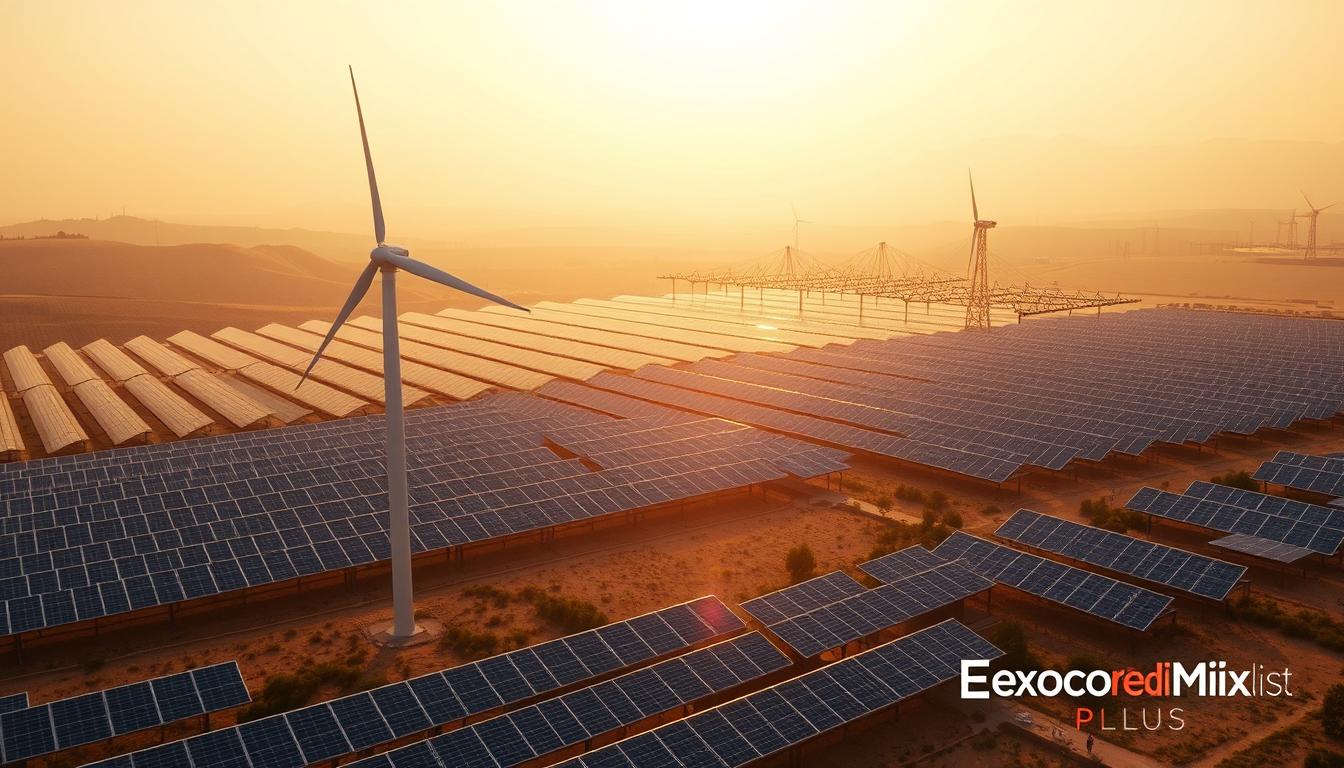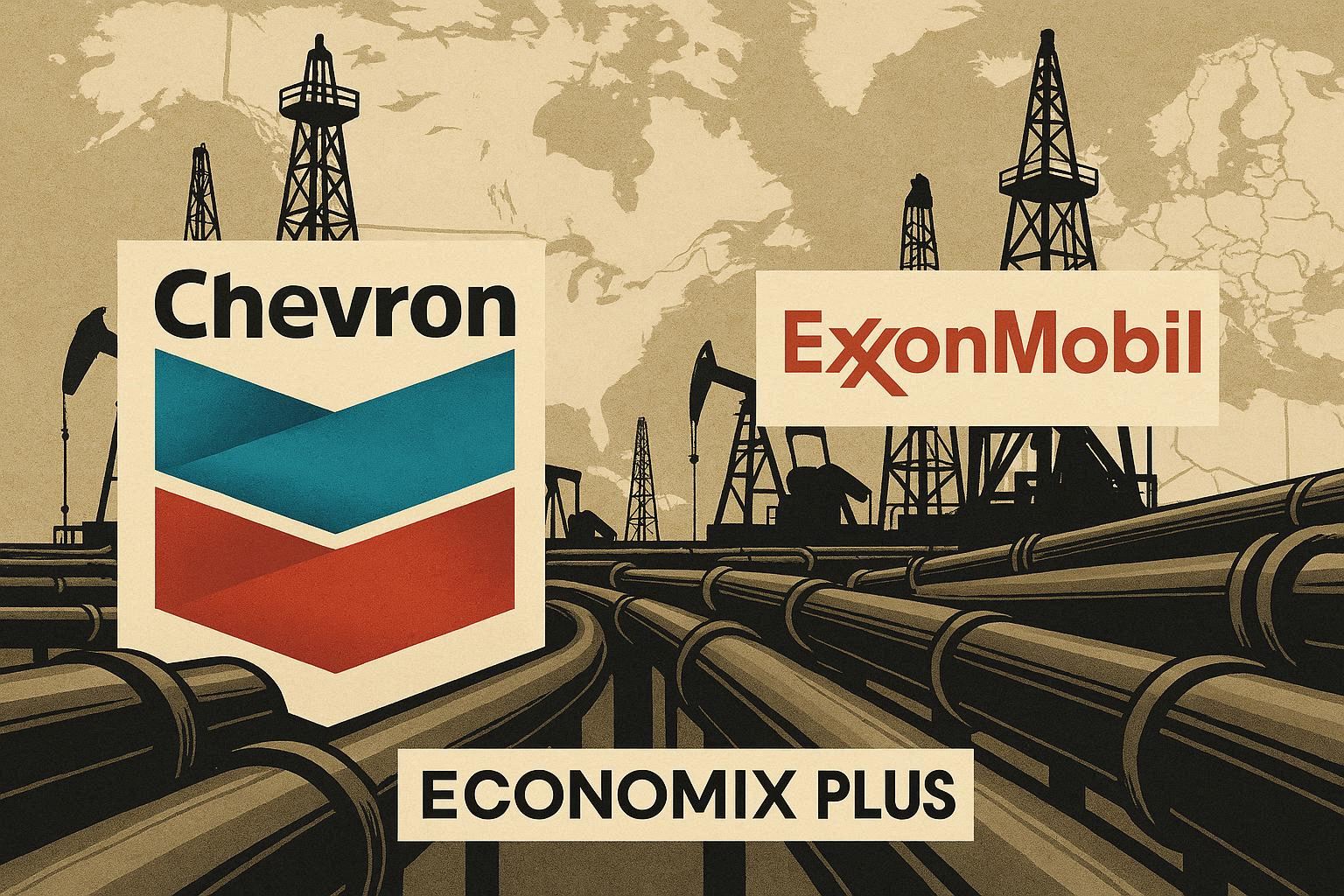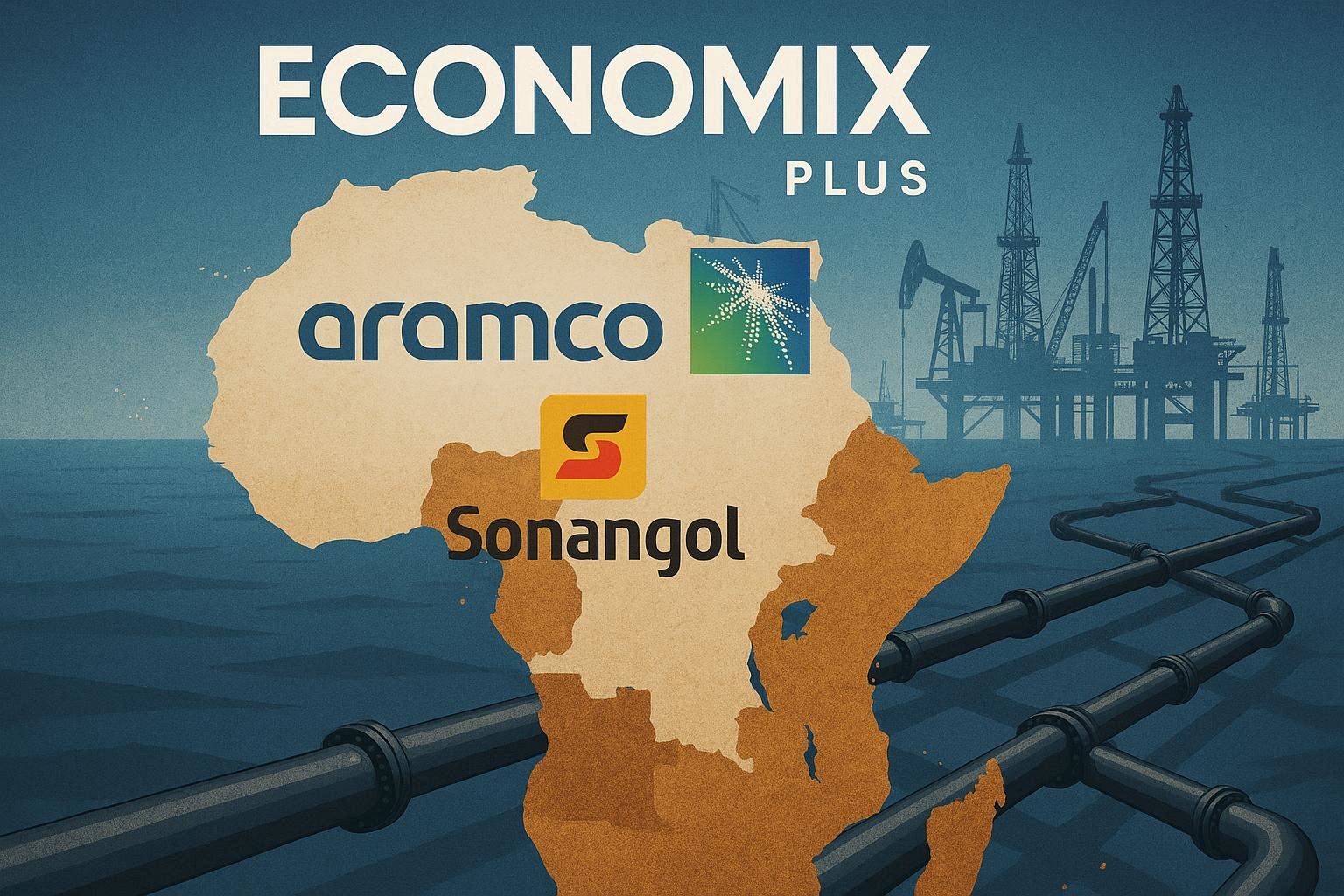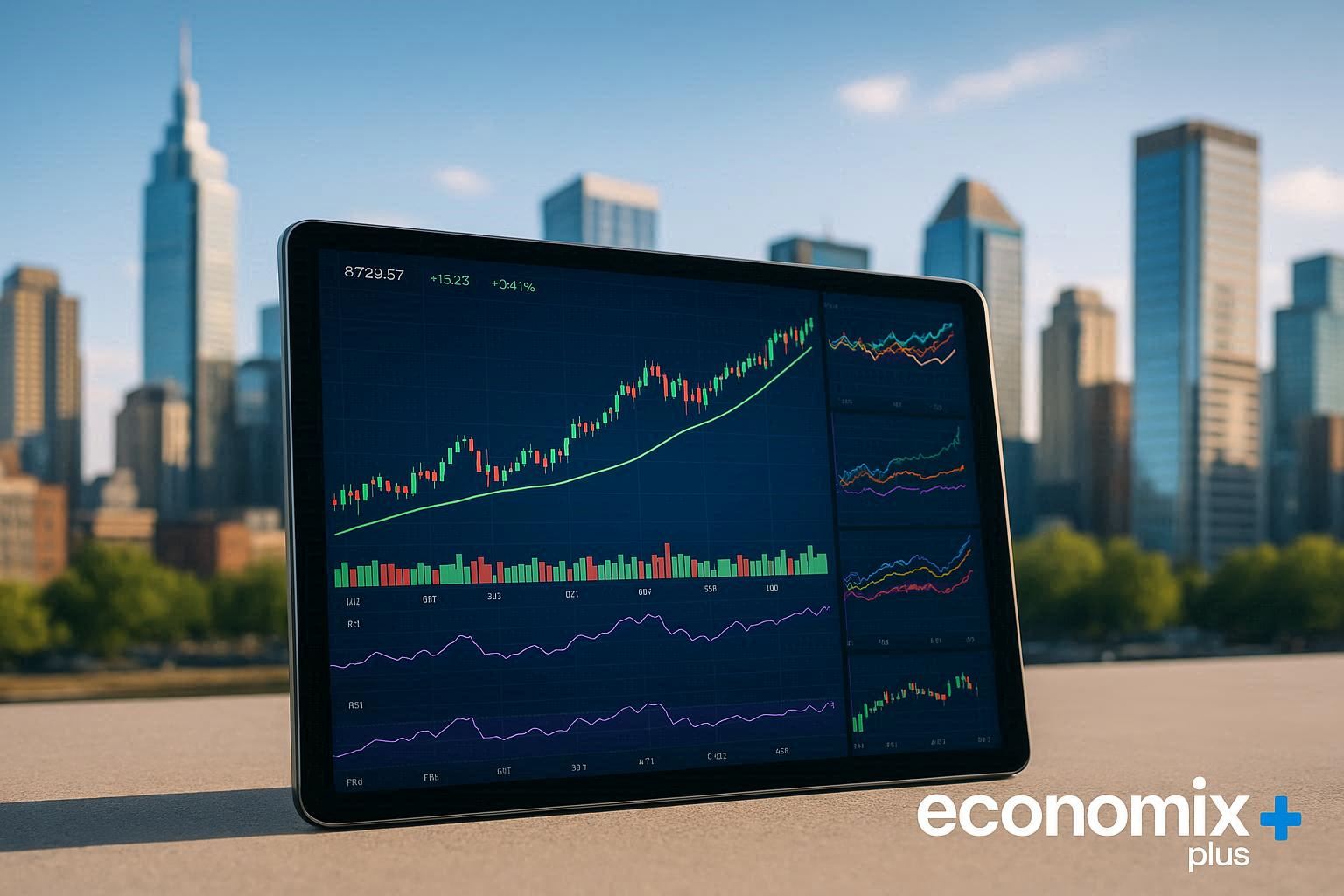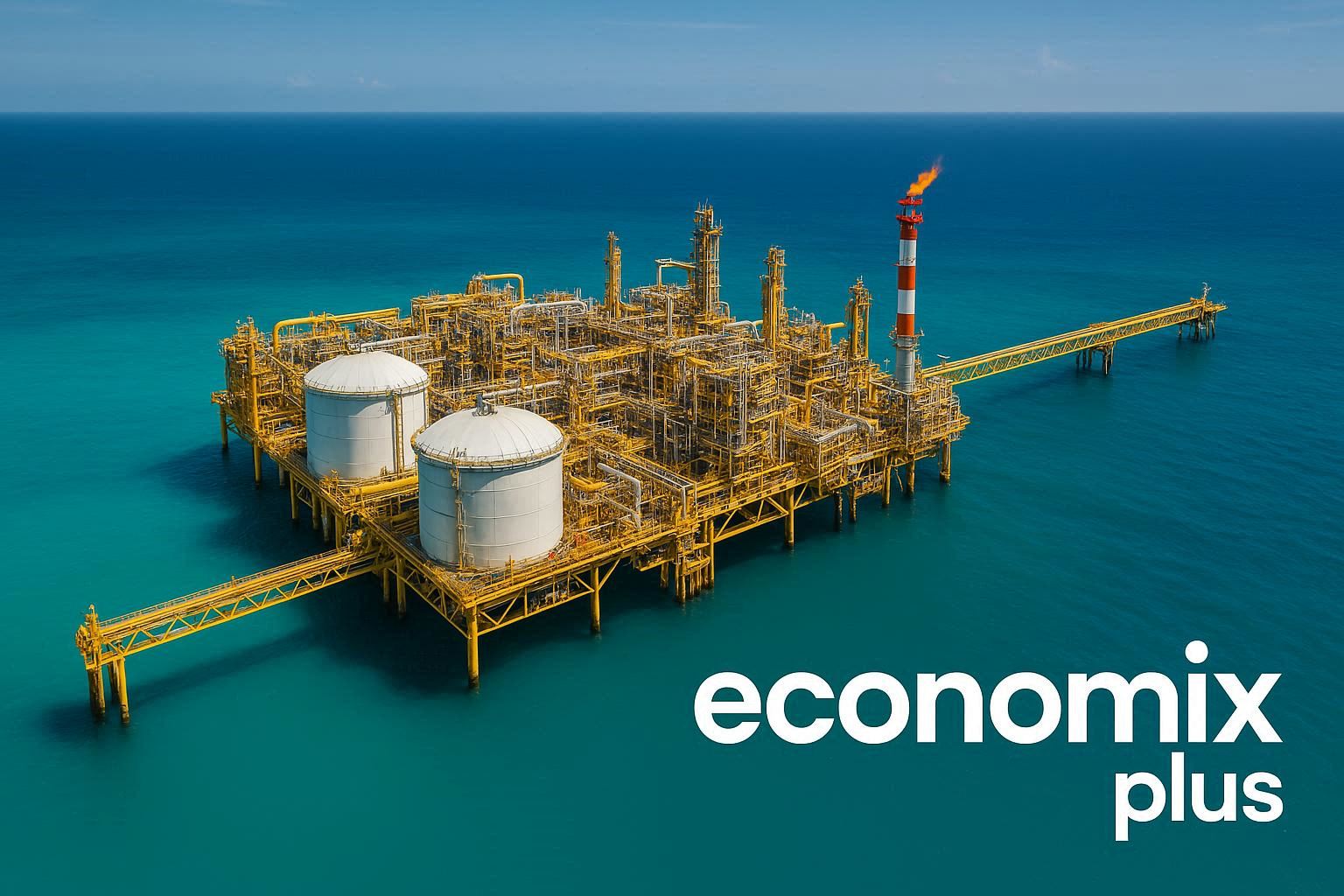Traditional oil companies are shifting focus. Once reliant on fossil fuels, they now pour billions into renewable energy. But who stands out? Two industry leaders, TotalEnergies and Eni, compete for dominance in solar power and other green initiatives.
In 2018, major oil firms allocated just 1% of budgets to clean alternatives. Today, the landscape changes rapidly. TotalEnergies aims for 20% of its capital expenditures to target energy projects by 2040. Meanwhile, Eni committed €1.2 billion to renewables between 2018 and 2021.
The International Energy Agency (IEA) predicts corporate investments will drive global solar power expansion. With BP also dedicating $8-10 billion historically, the race intensifies. Who leads? The answer may surprise you.
Key Takeaways
- Oil companies now prioritize renewable investments.
- TotalEnergies plans 20% green spending by 2040.
- Eni allocated €1.2 billion for renewables recently.
- Corporate funding accelerates global solar growth.
- Industry shifts highlight competitive strategies.
Introduction: The Solar Energy Race Among Oil Majors
Climate commitments reshape corporate strategies in the oil gas industry. The Paris Agreement accelerated a business evolution, compelling fossil fuel firms to allocate capital toward wind solar initiatives. By 2030, renewables could supply 30% of global power, per IEA forecasts.
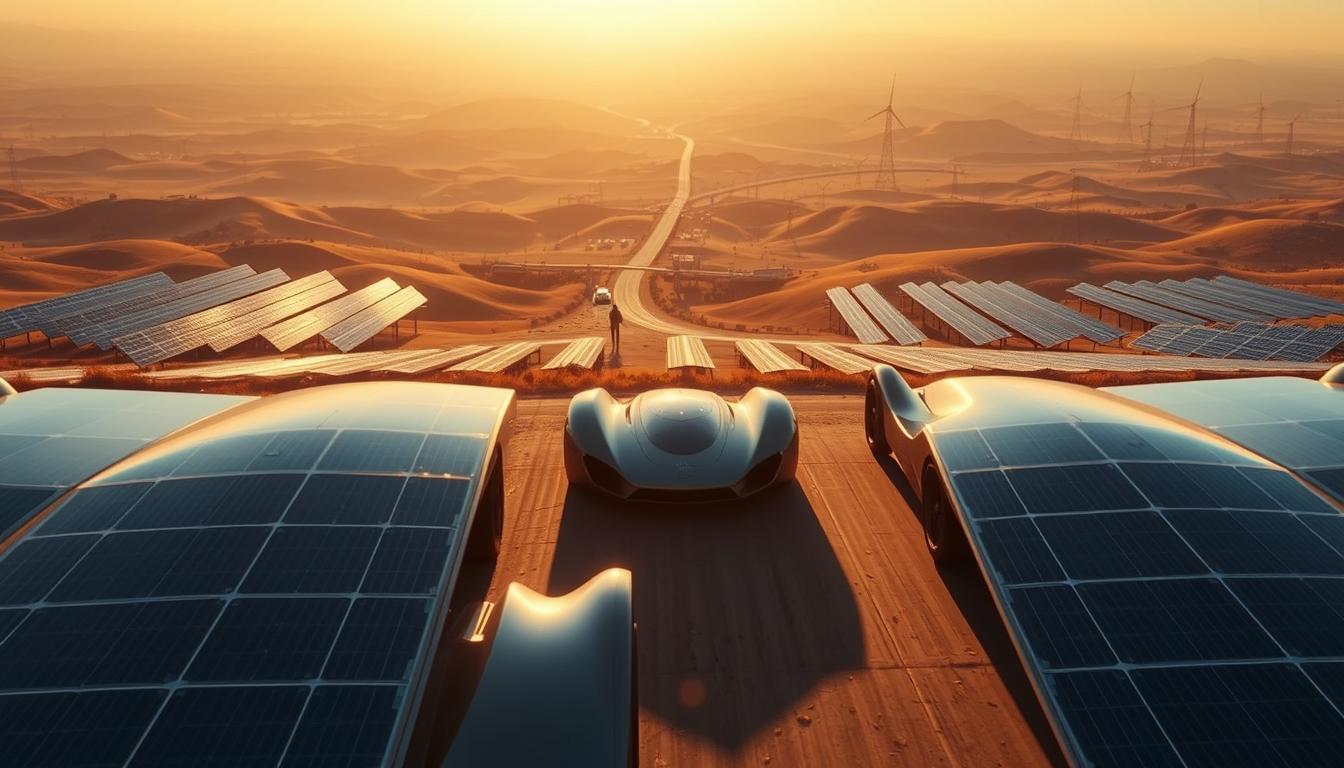
Why Fossil Fuel Leaders Pivot to Renewables
Regulatory pressures and shifting investor demands drive change. BP’s $200M Lightsource acquisition set a precedent, proving investments in clean power yield competitive returns. Solar projects now deliver 7–10% ROI, rivaling traditional oil margins.
Metrics Defining the Transition
- Project pipelines: Scale determines market influence.
- CO₂ offsets: Critical for ESG ratings and compliance.
- Technology: Battery storage (e.g., Saft) vs. next-gen panels (e.g., perovskite).
ExxonMobil’s absence underscores the divide. While peers diversify, its focus remains fossil-centric—a risky stance in a decarbonizing sector.
Total’s Solar Energy Strategy and Investments
Corporate giants are redefining their portfolios with green commitments. One firm stands out with a $500M annual pledge to clean power. Its roadmap blends acquisitions, tech integration, and geographic expansion.
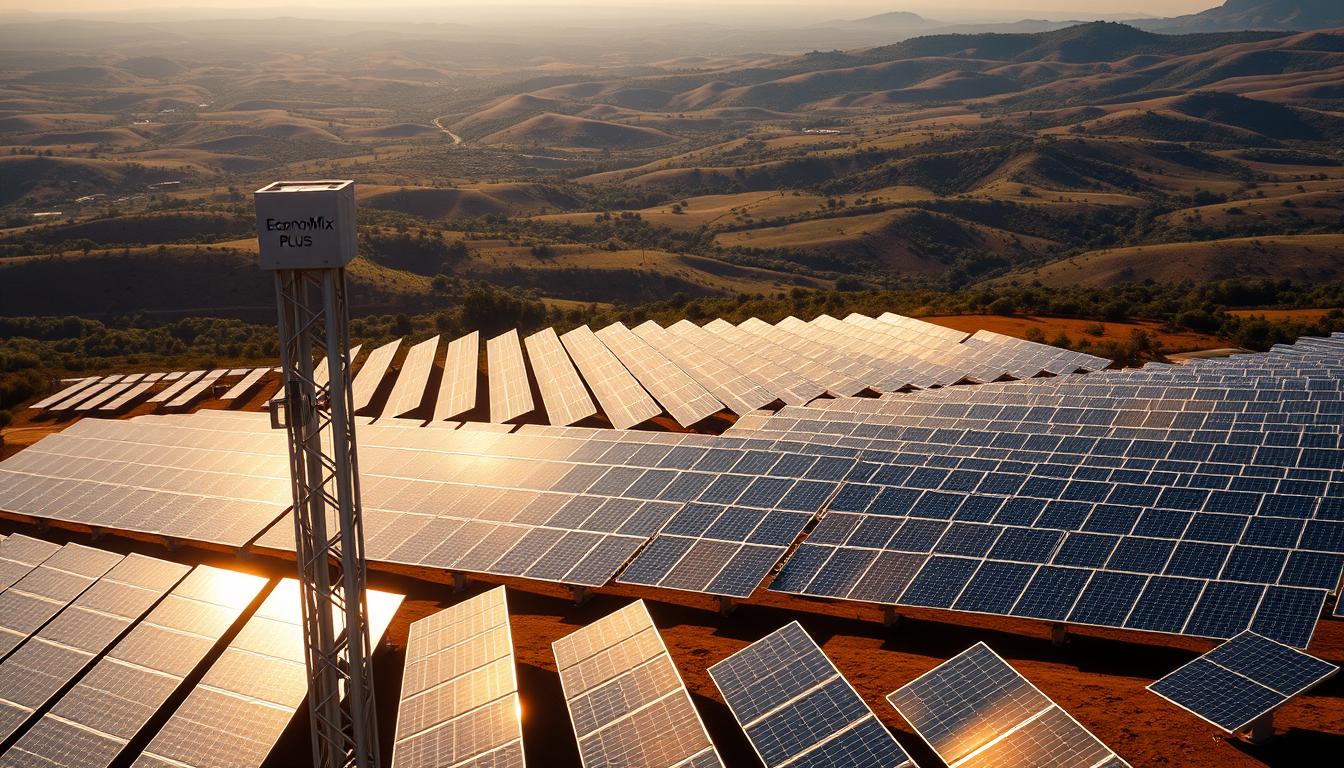
SunPower Acquisition and Growth Targets
A $1.4B stake in SunPower secured 60% ownership, anchoring its solar ambitions. The move supports a 5GW capacity goal by 2025. Currently, operations yield 1.6GW, with utility-scale energy projects driving growth.
Strategic Acquisitions
The $1.7B Direct Energie deal bolstered grid-scale developments. Lampiris added EU retail distribution, while Saft batteries enhance grid stability. North America dominates with 6,500 EV charging points.
Regional Focus
U.S. and European markets receive priority. The company leverages partnerships to scale infrastructure. Hybrid systems merge storage tech with photovoltaic farms, ensuring reliability.
Eni’s Approach to Solar Power Development
Energy transitions demand bold moves, and Eni answers with strategic solar deployments. The Italian multinational allocates €1.2B to renewables, targeting 1GW capacity by 2021. Its hybrid projects blend innovation with legacy oil expertise, from biorefineries to mini-grids.
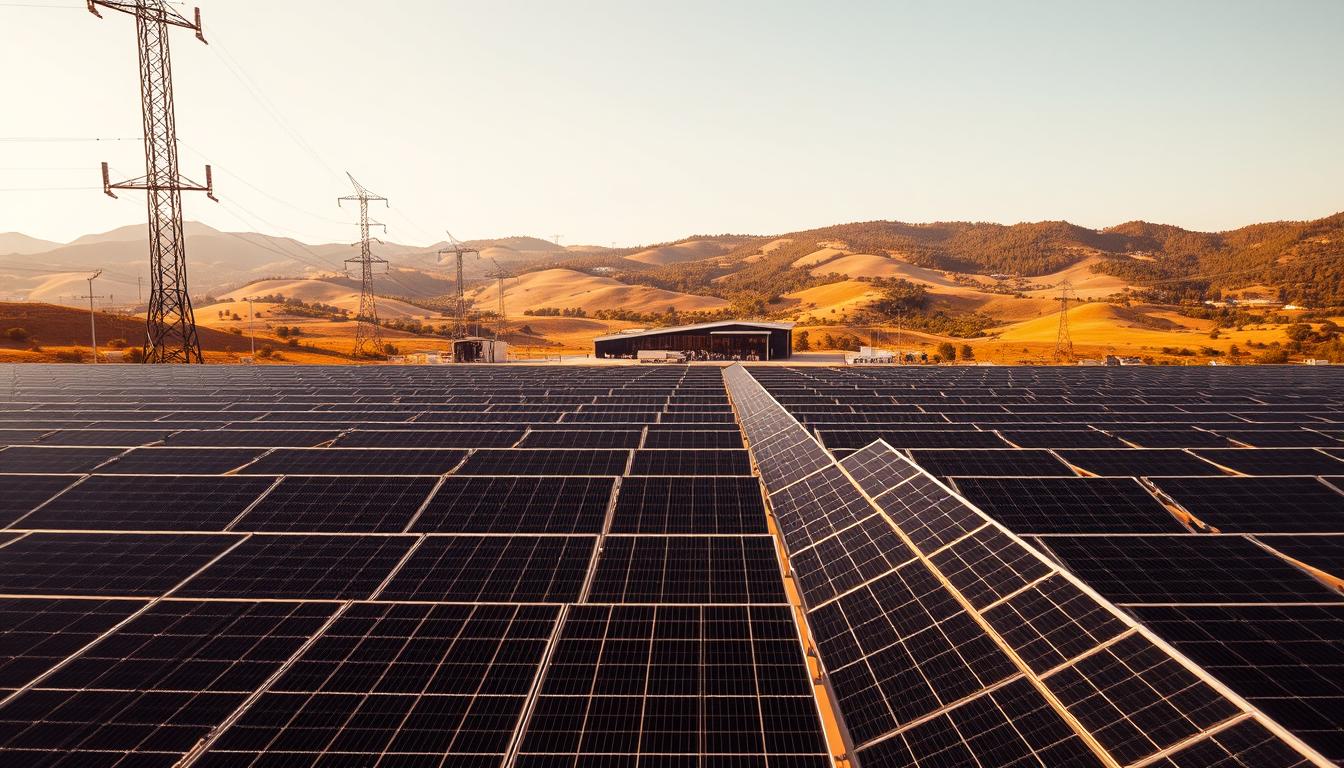
Budget Breakdown and Capacity Goals
Eni’s 2018–2021 budget prioritized scalable solutions. A 70% share funds photovoltaic farms, while 20% supports wind-solar hybrids. The remaining 10% fuels R&D, including perovskite cell trials.
| Allocation | Percentage | Focus Area |
|---|---|---|
| Solar | 70% | Utility-scale farms |
| Wind | 20% | Hybrid systems |
| R&D | 10% | Next-gen storage |
Strategic Partnerships
A partnership agreement with GE Renewable Energy integrates turbines with solar arrays, boosting electricity output. Equinor collaborates on offshore installations, leveraging floating panel tech.
Biorefineries and Emerging Markets
Since 2014, Eni converted three refineries to process biofuels, cutting Scope 3 emissions. Sub-Saharan Africa hosts 48 mini-grids, combining diesel backups with photovoltaic panels to ensure reliable grid stability.
By 2025, Eni aims for 5GW installed capacity—a fivefold growth from 2021’s 0.8GW. Its dual focus on tech and territory positions it as a dark horse in the renewables race.
Total vs. Eni: Direct Comparison of Solar Investments
Capital allocation strategies reveal contrasting priorities in green transitions. While both firms pivot toward renewables, their spending patterns and tech choices diverge sharply.
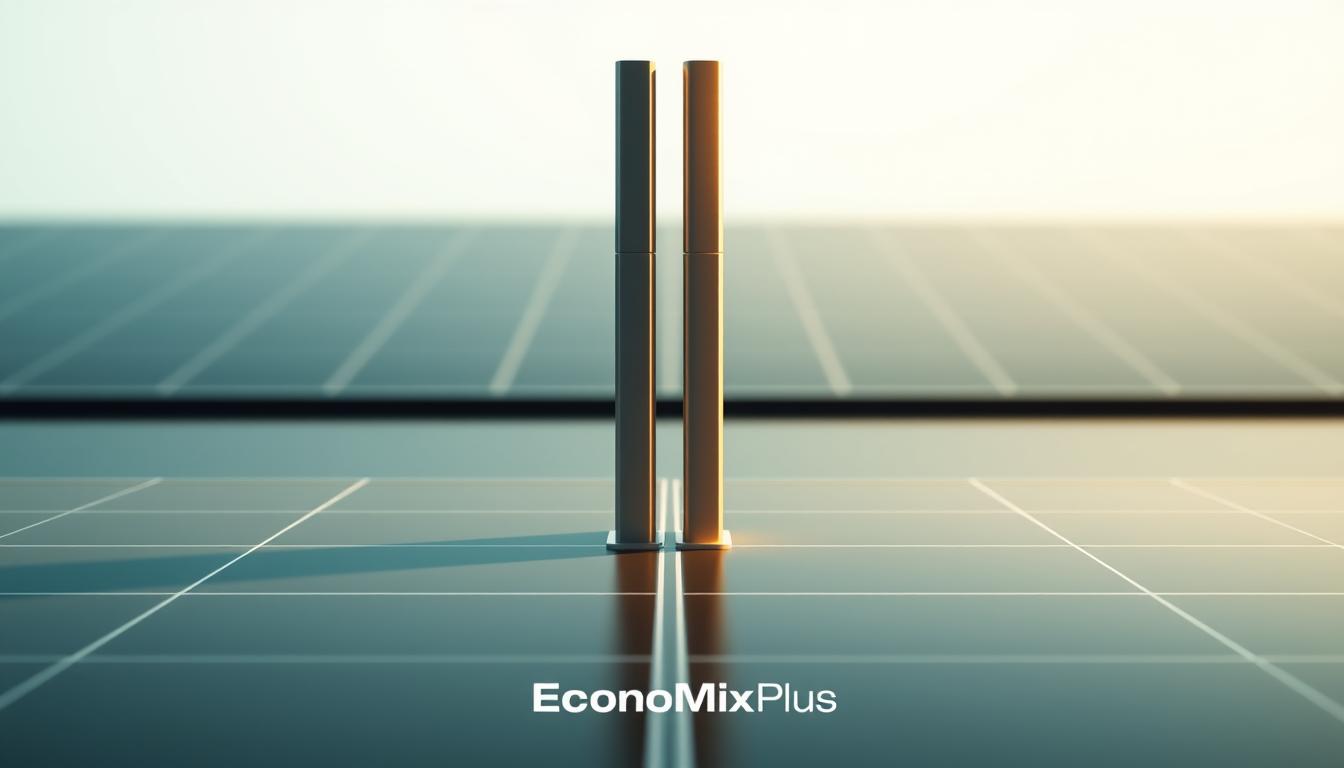
Capital Expenditure: Percentage of Total Budgets
One dedicates 3% of its budget to clean energy, while the other commits 4.5%. The latter’s aggressive 2030 net-zero pledge outpaces the former’s 2040 target for 20% green spending.
Installed Capacity and Project Pipelines
Combined, they oversee 12.4GW in development. The larger player leads with an 8GW pipeline, focusing on utility-scale farms. Its rival trails at 4.4GW but prioritizes hybrid systems.
Technology Focus: Batteries and Grid Integration
Lithium-ion batteries dominate one portfolio, ensuring grid stability. The other experiments with *perovskite cells*, aiming for 30% efficiency. Both solutions address emissions but through different lenses.
“Storage innovations will dictate who leads the next decade.”
- CO₂ offsets: 5M tons/year vs. 2.8M tons/year.
- Hybrid projects: LNG-solar combos cut flaring in Mozambique.
- R&D spending: 10% of budget for next-gen technologies.
Financial Commitments to Solar Projects
Financial strategies reveal stark contrasts in renewable commitments. One firm’s $1.4B SunPower stake anchors its portfolio, while another prioritizes biorefineries. Over nine years, spending surged, reshaping the clean power landscape.
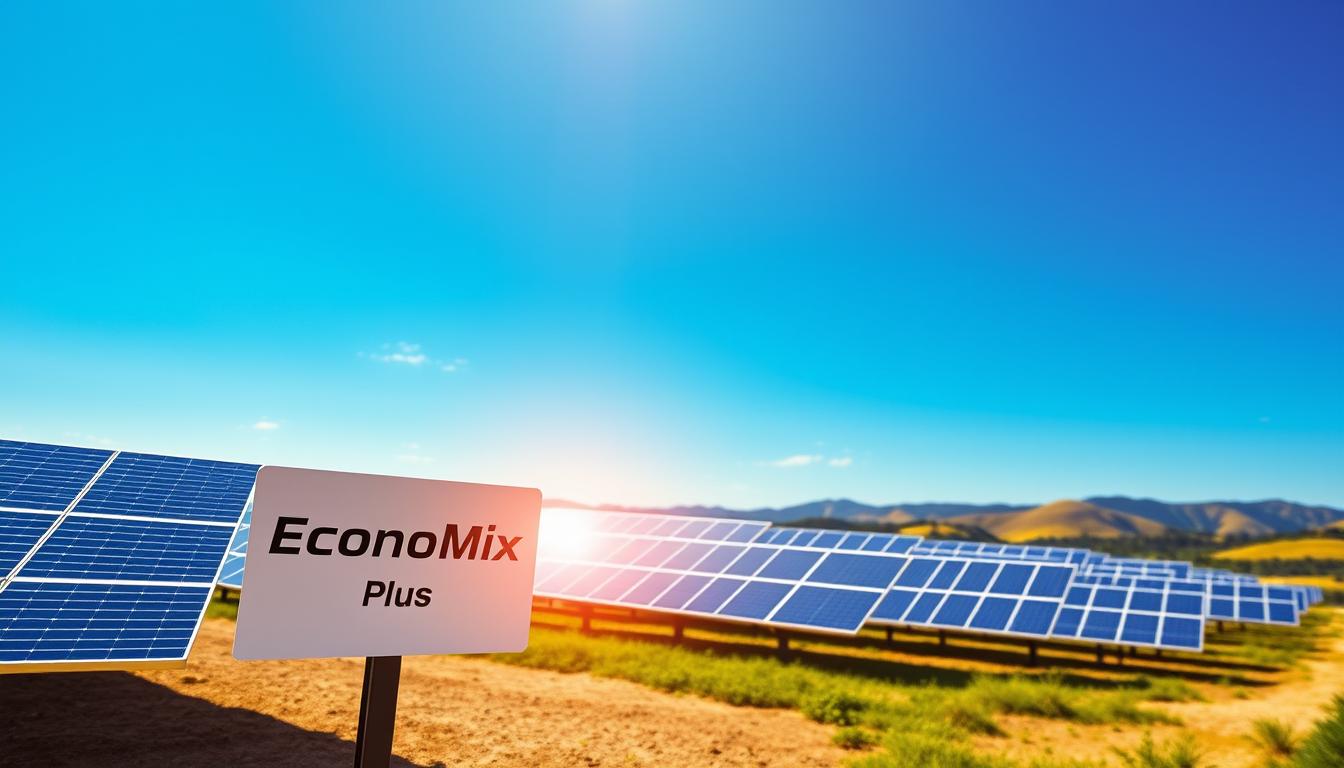
Capital Allocation: SunPower vs. Biorefineries
A $1.4B investment secured a 60% share in SunPower, driving 5GW capacity by 2025. Meanwhile, biorefineries cut emissions by 80%, blending legacy expertise with green innovation.
Annual Spending Trends (2012–2021)
From 2016–2021, one corporation channeled $3.2B into renewables, outpacing its rival’s $2.1B. Cumulative solar funding hit $8.9B since 2011, dwarfing Chevron’s $100M benchmark.
- ROI timelines: 7-year payback periods vs. 10-year horizons.
- Africa mini-grids: $600M initiative targets 48 hybrid systems by 2025.
- Plenitude sale: Funds redirected to scale photovoltaic farms.
“Speed of capital deployment determines market leadership in renewables.”
Geographic Distribution of Solar Initiatives
Geography plays a pivotal role in renewable energy deployment. While some firms target mature markets, others address energy poverty in developing regions. This divide reflects contrasting risk appetites and growth strategies within the sector.
Total’s Dominance in North America
The United States hosts 14 utility-scale plants under one corporate umbrella, leveraging stable infrastructure and incentives. Europe complements this focus, with 60% of projects concentrated in France and Spain.
Key advantages include:
- Faster permitting in deregulated markets
- Existing grid connections reducing startup costs
- Higher electricity prices justifying capital intensity
Eni’s Emerging Markets Strategy
Across Africa, where 43% lack electricity access according to World Bank sources, hybrid systems bridge the gap. Nigeria’s solar-diesel networks already cut fossil fuel use by 40%.
| Region | Project Type | Households Powered |
|---|---|---|
| Sub-Saharan Africa | Mini-grids | 300,000+ |
| Angola | LNG-solar hybrids | Flaring penalties avoided |
Regulatory hurdles persist, but Angola’s gas-to-power integration demonstrates innovative workarounds. The approach turns legacy assets into renewable enablers rather than stranded liabilities.
Notable Solar Projects by Total
Massive photovoltaic farms now anchor corporate renewable portfolios. Among these, strategic collaborations stand out, blending scale with innovation.
Lightsource BP Joint Venture
The company’s partnership with Lightsource BP operates 3.8GW of assets worldwide. In Texas, an 800MW farm powers 150,000 homes, ranking among North America’s largest.
France’s 2.1GW grid, enabled by the Direct Energie acquisition, showcases utility-scale expertise. Hybrid agrivoltaic pilots here merge crops with panels, boosting land efficiency.
Global Innovations and Expansions
Spain’s 250MW site integrates Tesla batteries, ensuring generation stability during peak demand. Nevada’s 2023 plant will supply 90,000 households, backed by a 20-year agreement.
“Corporate renewables now drive 40% of global capacity growth.” —
- Agrivoltaics: 12 pilot farms combine agriculture with energy production.
- Storage: Tesla Powerpacks store excess power for nighttime use.
- Scale: 5GW target by 2025, up from 1.6GW in 2021.
Eni’s Flagship Solar Ventures
Renewable leadership emerges through bold infrastructure transformations. The Italian energy giant combines legacy expertise with cutting-edge energy sources, creating hybrid solutions that redefine power access.
Biorefinery Conversions and Hybrid Systems
Eni’s Gela biorefinery showcases innovation with a 20MW onsite solar array. This facility processes biofuels while cutting emissions by 80%. The integration demonstrates how traditional assets can evolve for a climate-focused future.
In the Democratic Republic Congo, a 50MW photovoltaic farm powers 200,000 residents. Paired with battery storage, this project reduces reliance on unstable grids. Similar initiatives across Africa highlight scalable models for emerging markets.
Mini-Grid Revolution in Sub-Saharan Africa
Kenya’s solar-diesel networks slash costs by $18M annually. These systems blend photovoltaic panels with backup generators, ensuring 24/7 electricity. The World Bank supports Mozambique hybrids, proving public-private partnerships accelerate deployment.
- Cost efficiency: 30% savings versus diesel-only systems
- Scale: 500 mini-grids planned across 12 nations by 2025
- Impact: 300,000+ households now access reliable power
“Hybrid mini-grids bridge the energy gap where traditional grids fail.”
Eni’s targets reflect ambitious yet achievable milestones. With each project, the company proves that oil majors can drive meaningful change in global electrification.
Corporate Renewable Energy Targets
Corporate sustainability goals are reshaping investment priorities in the energy sector. Two industry leaders chart distinct paths, with one targeting 35GW of renewable energy by 2025 and another committing to 15GW by 2030. These figures underscore a seismic shift from legacy oil gas operations.
Total’s 20% Green Energy Cap-Ex by 2040
The French multinational allocates 20% of its budget to renewables, prioritizing floating wind-solar hybrids in Asia. A 35GW capacity target reflects aggressive growth, backed by $220M annual R&D spending. SBTi-validated goals ensure accountability.
Eni’s Net-Zero Roadmap and Solar Ambitions
Italy’s energy firm aims for net-zero by 2050, leveraging solar-powered biorefineries to cut Scope 3 emissions. Its 15GW target includes perovskite cell trials, funded by a $180M R&D budget. Independent figures confirm a 40% emissions drop at converted sites.
- Timelines: 2040 gas transition (Total) vs. 2050 net-zero (Eni).
- Innovation: Floating solar pilots in Vietnam vs. African mini-grids.
- Validation: Both firms meet Science-Based Targets initiative (SBTi) criteria.
“Corporate renewables targets now drive 60% of global clean energy investments.”
Technological Innovations in Solar
Breakthroughs in storage and materials redefine solar efficiency benchmarks. Corporations leverage cutting-edge technologies to overcome intermittency and scale clean power. From grid-scale batteries to ultra-efficient panels, these advancements shape the future of renewables.
Saft Battery Integration: Total’s Storage Edge
Total’s Saft Intensium Max systems store 20MWh nightly, ensuring grid stability during peak demand. These lithium-ion batteries power 4-hour backup cycles, critical for utility-scale farms. AI-driven forecasting optimizes charging, slashing operational costs by 15%.
Eni’s Perovskite Solar Cells: Efficiency Leap
Eni’s Algerian desert trials achieve 28% efficiency with perovskite prototypes. Durability tests show 10-year lifespans under extreme heat—a game-changer for arid regions. Projected LCOE of $18/MWh undercuts traditional silicon panels.
| Technology | LCOE | Key Advantage |
|---|---|---|
| Saft Batteries | $24/MWh | 4-hour storage |
| Perovskite Cells | $18/MWh* | 28% efficiency |
*Projected cost for Eni’s perovskite at scale. Hybrid systems with CO₂ capture pilots further reduce emissions, blending solar with carbon-neutral goals. Recent highlights a 40% drop in Scope 2 emissions at test sites.
“Material science will dictate the next decade’s solar leaders.”
Impact on Global Solar Energy Capacity
Renewable expansion now reshapes global power dynamics. Fossil fuel firms contribute significantly, with international energy agencies crediting their projects for 2.4% of worldwide photovoltaic capacity. This growth aligns with IEA predictions of 60% renewable adoption by 2030.
IEA Forecasts and Corporate Contributions
The IEA identifies oil majors as pivotal to clean generation targets. One firm’s 5M-ton annual CO₂ offset rivals standalone power plant reductions. Combined, their 3.2GW and 8GW portfolios avoid 6.8M tons yearly—equivalent to 1.5M cars off roads.
Comparative CO₂ Offset Projections
Hybrid systems in emerging markets amplify impact. Mini-grids in Africa cut diesel use by 40%, while U.S. utility-scale farms support 2035 grid decarbonization. BP’s 8GW wind-solar share trails behind, highlighting divergent strategies.
- 2030 projection: 8% of global solar expansion tied to these firms.
- Efficiency gains: Perovskite cells could boost capacity by 30%.
- Policy synergy: Tax incentives accelerate global energy investment returns.
“Oil giants’ renewables pivot offsets 10% of industry emissions annually.”
Challenges in Transitioning to Solar Dominance
The shift from fossil fuels to renewables isn’t without obstacles. Legacy oil operations create financial dependencies, while regulatory delays slow progress. Companies must navigate these hurdles to achieve clean business goals.
Financial Tensions Between Old and New Energy
One firm relies on oil for 70% of revenue, limiting solar investments. Its Angolan fields demand upkeep, diverting funds from photovoltaic expansion. This conflict slows capacity growth in emerging markets.
Another faces similar struggles. Converting refineries requires upfront costs, though long-term savings justify the move. Balancing fuel profits with green ambitions remains a key challenge.
Policy Barriers Across Key Markets
Africa’s solar potential remains untapped due to bureaucracy. Permitting takes 18 months on average, stalling projects. Only 11% of hydropower resources get used, per industry reports.
| Region | Challenge | Impact |
|---|---|---|
| Africa | Permitting delays | 18-month project stalls |
| EU | Feed-in tariff cuts | Uncertain ROI |
| U.S. | Tax credit expirations | Investment hesitancy |
Supply chain issues worsen delays. Panel shortages push costs up 12% in 2022. These factors test corporate commitments to the sector.
“Regulatory harmony could accelerate solar adoption by 40% in developing nations.”
The road ahead demands creative solutions. Hybrid systems and policy partnerships may bridge gaps. Still, infrastructure limitations persist, requiring sustained investment.
Investor Sentiment and Market Reactions
Market analysts track how renewable shifts impact corporate valuations. Financial markets reward firms aligning with climate goals, as seen in stock surges post-solar announcements. ESG metrics now drive investment decisions, reshaping traditional energy portfolios.
Stock Performance Linked to Solar Commitments
From 2020–2023, one company saw shares climb 15% after acquiring SunPower. Its rival gained 9%, reflecting slower but steady growth. Both outperformed oil peers by 12%, per Bloomberg news.
ESG Ratings and Competitive Dividends
MSCI upgraded the French firm to AA for its 22% ESG score jump. Italy’s energy leader holds an A rating, with room to improve. Dividend policies diverge—7% yields attract income investors, while 5% payouts fund expansion.
| Metric | Firm A | Firm B |
|---|---|---|
| ESG Rating (MSCI) | AA | A |
| Dividend Yield | 5% | 7% |
| Stock Growth (2020–2023) | 15% | 9% |
- BlackRock invested $500M in one solar arm, signaling institutional confidence.
- A €1B green bond fuels mini-grids across Africa, blending profit with impact.
- Hybrid projects reduce risk, appealing to cautious capital allocators.
“Renewables now account for 30% of energy sector valuations—up from 8% in 2015.”
Future Outlook: Who Leads the Solar Charge?
Floating solar farms and agrivoltaics mark the next frontier in clean power. Corporations race to scale these energy sources, with budgets and tech defining winners. By 2030, market share gaps could widen significantly.
Projected Investments Through 2030
One firm pledges $28B for wind solar projects, dwarfing its rival’s $19B commitment. The larger budget targets 100 floating solar sites, while the other focuses on hybrid grids. Both strategies aim to dominate renewable energy markets.
- Floating solar: 200MW Malta pilot (Eni) vs. 100-site global rollout (Total).
- Agrivoltaics: John Deere partnership scales dual-use farmland panels.
- ROI: 7-year payback for floating farms, 10 years for perovskite trials.
Expansion Into Floating Solar and Agrivoltaics
Eni’s Malta pilot tests salt-resistant panels, a game-changer for coastal regions. Meanwhile, Total’s agrivoltaic collabs boost crop yields by 15% while generating power. These innovations address land scarcity and global energy investment priorities.
“Floating solar capacity will grow 200% by 2030, led by corporate projects.”
| Metric | Leader | Trailing Player |
|---|---|---|
| 2030 Market Share | 6.1% | 3.9% |
| Perovskite Timeline | 2028 | 2032 |
Perovskite cells could tip scales. Eni’s 2028 commercialization plan outpaces competitors, promising 30% efficiency gains. If successful, it may capture 8% of the photovoltaic market by 2035.
Conclusion: The Verdict on Solar Leadership
Corporate solar strategies now define industry leadership. One firm leads with $9.3B invested, tripling rivals’ capacity. Its tech edge in storage and agrivoltaics sets benchmarks.
The competitor excels in emerging markets. African mini-grids showcase cost efficiency, though lagging in scale. Both trail Ørsted’s 12.6GW portfolio, revealing room for growth.
Innovation versus scale splits their paths. Renewable energy demands both—capital for farms, creativity for hybrids. The race isn’t just about panels; it’s reshaping global power dynamics.
FAQ
Why are oil companies investing in solar power?
How much does Total allocate to solar annually?
What is Eni’s solar capacity goal?
Which regions do these companies prioritize?
How do their financial commitments compare?
FAQ
Why are oil companies investing in solar power?
Major firms are diversifying to meet climate targets and reduce emissions. Shifting market demand and regulatory pressures also drive this transition.
How much does Total allocate to solar annually?
The company commits around 0M yearly, focusing on utility-scale projects and battery storage solutions.
What is Eni’s solar capacity goal?
Eni aims for 5GW by 2025, backed by €1.2B in funding from 2018-2021 for hybrid energy systems.
Which regions do these companies prioritize?
Total dominates in North America and Europe, while Eni targets emerging markets like sub-Saharan Africa.
How do their financial commitments compare?
Total invested
FAQ
Why are oil companies investing in solar power?
Major firms are diversifying to meet climate targets and reduce emissions. Shifting market demand and regulatory pressures also drive this transition.
How much does Total allocate to solar annually?
The company commits around $500M yearly, focusing on utility-scale projects and battery storage solutions.
What is Eni’s solar capacity goal?
Eni aims for 5GW by 2025, backed by €1.2B in funding from 2018-2021 for hybrid energy systems.
Which regions do these companies prioritize?
Total dominates in North America and Europe, while Eni targets emerging markets like sub-Saharan Africa.
How do their financial commitments compare?
Total invested $1.4B in SunPower, whereas Eni focuses on biorefineries. Both show rising annual spending since 2012.
What technological innovations do they pursue?
Total integrates Saft batteries, while Eni researches perovskite cells for higher efficiency.
How does solar impact their ESG ratings?
Renewable projects boost investor confidence, improving ESG scores and stock performance for both firms.
What are their long-term renewable targets?
Total plans 20% green capex by 2040. Eni’s net-zero roadmap includes expanding floating solar installations.
.4B in SunPower, whereas Eni focuses on biorefineries. Both show rising annual spending since 2012.
What technological innovations do they pursue?
Total integrates Saft batteries, while Eni researches perovskite cells for higher efficiency.
How does solar impact their ESG ratings?
Renewable projects boost investor confidence, improving ESG scores and stock performance for both firms.
What are their long-term renewable targets?
Total plans 20% green capex by 2040. Eni’s net-zero roadmap includes expanding floating solar installations.
